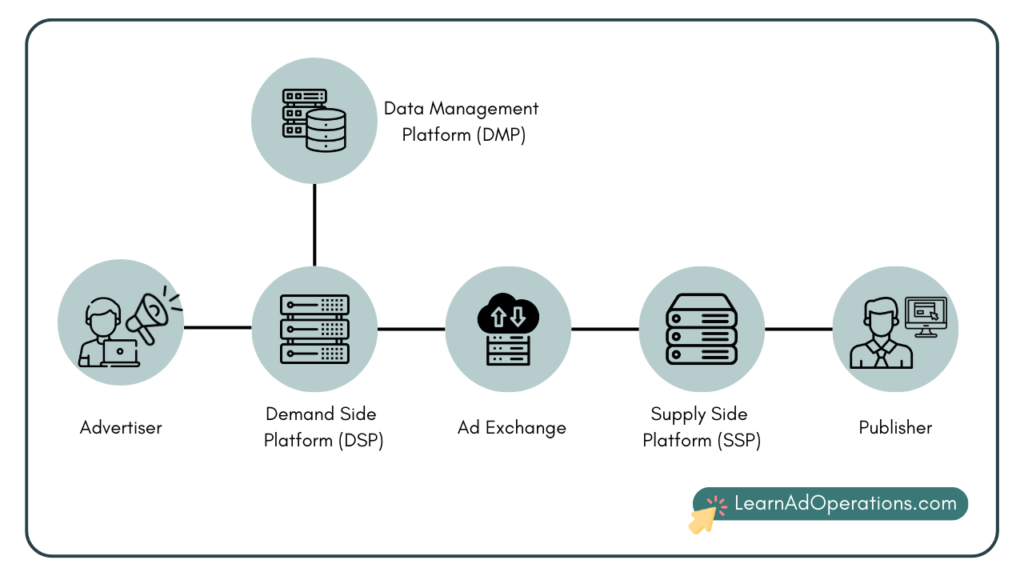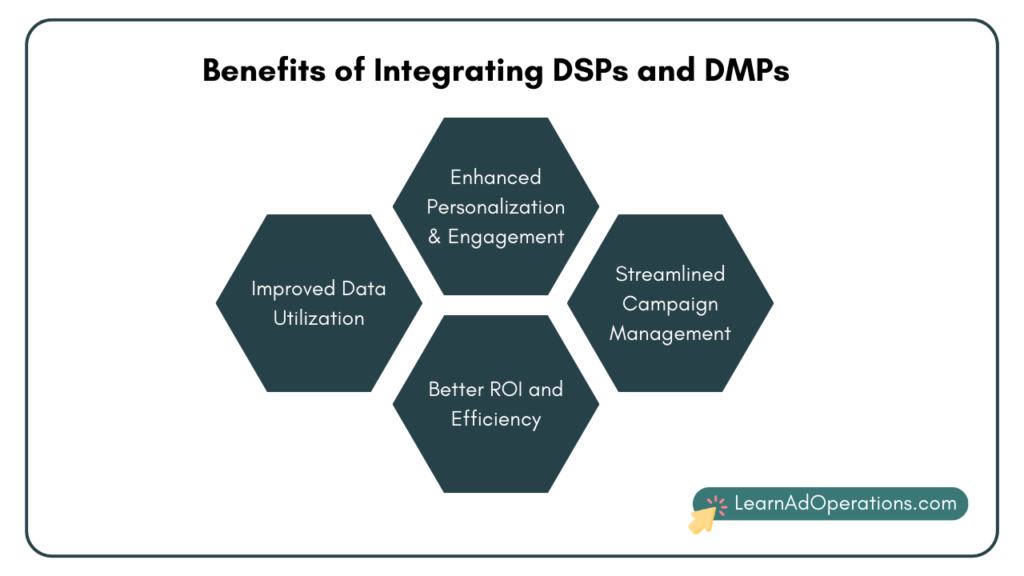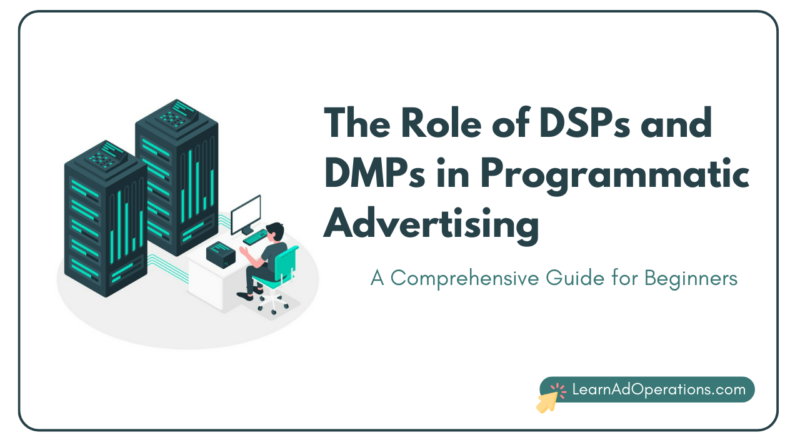The Role of DSPs and DMPs in Programmatic Advertising
Programmatic Advertising is one of the innovative approaches in the digital marketing domain by enabling advertisers and publishers to buy and sell their ad inventories in real-time. Programmatic advertising ensures target the audiences precisely to reach the advertising goals.
Demand Side Platform (DSP) and Data Management Platform (DMP) are the two major components of Programmatic Advertising. DSP and DMPs streamline the advertising process and enhance the targeting capabilities to reach the targeted audiences to achieve campaign goals.
This blog post highlights the importance of DSPs and DMPs in the programmatic advertising and share clear insights for beginners to understand these two key players.
Understanding Demand Side Platform (DSP)
A Demand Side Platform (DSP) is a technology that enables advertisers to buy the ad inventory across the websites and apps in real time. This technology helps the advertisers to choose where and when they wanted to show their ads to the precisely targeted audiences. Let’s look at the importance of DSP in programmatic advertising.
Automated Ad Buying: This is a unique feature of DSPs where it enables the advertisers to buy desired ad inventory programmatically from multiple sources. It also connects with multiple ad exchanges and Supply Side Platforms (SSP) to find most relevant ad inventory. The programmatic way of buying the ad inventory reduces the manual work and optimize the cost per impression.
The advertisers need to update the requirements of ad buying along with the cost that they can spend per CPM in the DSP. The DSP will connect with multiple ad exchanges and ad networks to identify the ad inventory and buy it when it is available. The advertisers are need not to reach out to publishers and ad networks to buy the ad inventory.
For Ex: The sports shoes brand wanted to targeted the sports and fitness enthusiasts. The DSP will identify relevant sports and fitness blogs and bid for ad spaces that are meeting the advertiser targeting criteria to ensure that the ad will be shown to the relevant audiences.
Real Time Bidding (RTB): RTB is one of the key features of DSPs where it allows advertisers to bid for each impression instead of buying in bulk. The entire RTB process happens in milliseconds to ensure that the end user’s browsing experience should not impacted.
RTB helps the advertisers to optimize their ad budget by not placing the bids on irrelevant ad spots by rejecting the ad calls. It also opens an opportunity for the advertisers to bid for premium inventories to showcase their ads on the premium websites by optimizing the cost.
For Ex: A travel aggregator wants show their ad to the users who are searching/ planning for vacation and travel itinerary on the search engines or websites. DSP will show the most relevant ad from the travel aggregator to the user to take necessary action.
Advanced Targeting Capabilities: DSP offers cutting edge targeting options to the advertisers to narrow down their targeting to serve ads to the most relevant audience. DSP offers various targeting options such as demographic, geographic, platforms, etc., options to match it with audiences to target the ad.
For Ex: DSP helps the eCommerce brand to target the users who have previous purchased and/ or previously viewed the products and/or users who have visited the website’s home page or any category pages to retarget them to improve the conversions.
Campaign Management and Optimization: DSP offers advertisers to setup their campaigns with minimal efforts and optimize the campaigns to its fullest capabilities to drive the desired goals. DSP also provide maximum control to the advertisers to set the budget, monitor the campaign performance on the aggregated dashboards and adjust the campaign strategies in real time to maximize the revenue.
Integration with DMPs: DSPs provide an option to integrates with the Data Management Platforms (DMP) to enhance the targeting capabilities by leveraging extensive audience data. DMPs provide refined audience segments to improve the ad relevancy and drive return on investments.
Exploring Data Management Platforms (DMP)
Data Management Platforms (DMP) are crucial within Programmatic Advertising for collecting, organizing and analyzing the large set of audience data collected from various websites. The large set of data will be further segmented in various buckets to utilize it in the ad campaigns to target the relevant audiences. Let’s dig into the role of DMPs in programmatic advertising landscape.

Collecting Data from Various Sources: DMPs aggregate the granular level of data from various websites, mobile apps, CRM systems and other third-party data providers and dissect further to understand the user behavior. The collected data will be segmented by labelling the user behaviors and utilize them to target the relevant ad campaigns.
For Ex: A DMP gathers data such as page views, purchase history of the users, products added to cart but not purchased, interested category based on the product search, and other activities that user performed within the website from an eCommerce website. The collected data will be analyzed and segmented to retarget the users based on the campaign goal.
Creating Detailed Audience Segments: DMP enables advertisers to create audience segments based on the user data collected like demographic segments, interests-based segments, and past interactions-based segments to use it in the ad campaigns to improve the overall efficiency.
For Ex: A book selling website can use the DMP to dissect their data into multiple segments based on the various criteria such as mystery book lovers, young adult fiction fans, comic book buyers, educational books buyers, etc., to target the relevant audience in the upcoming the ad campaigns to drive the ROI.
Enhancing Targeting Precision: DMPs provide valuable insights to improve overall targeting of an ad campaign. It ensures that the advertisers show the ads to their most relevant customers who can click on the ads and reach to the landing pages. It reduces the expenses of serving the ads to the wrong audience and improve the user engagement by serving the ad to a most relevant audience.
For Ex: A fitness supplement seller can target the users who are actively searching for workout routines or nutrition tips online across the web to promote the product.
Enabling Personalization: DMPs allow greater personalization in online advertising by providing the vital audience insights. Advertisers can run the ad campaigns that tailored to individual user preferences and improve the overall effectiveness of the campaigns.
Ex: OTT apps like Netflix partners with DMPs to serve the personalized ads for their new shows based on the users’ viewing history. These personalized ads improve the user experience of the OTT platform and most of the users will be engaging with the personalized ads.
Measuring and Analyzing Performance: DMPs offers tools to analyze the targeted audience data and take real time action based on the performance. These analytical tools help the advertisers to measure the effectiveness of the ad campaigns by tracking the key performance metrics.
For Ex: An eCommerce website can review the user activities by category, by product, by types of transactions and apply the changes where it is required to improve the overall user engagement.
Integration of DSPs and DMPs:
The real potential of programmatic advertising lies in seamless integration of DSPs and DMPs to cater the advertiser needs when running effective ad campaigns. These two platforms help the advertisers to buy the ad inventory effectively with competitive price.

Improved Data Utilization: Advertisers can use the most relevant audience insights from DMPs to optimize the bidding strategies within DSP. This leads to improve the overall performance of the campaign and optimally utilize the budget to buy the desired ad inventory.
Enhanced Personalization and Engagement: Integrating both the DSP and DMP allows advertisers to target the most relevant audiences to improve the personalization and user engagement. The DMP insights help the DSPs to take real time action on increasing or decreasing the bids based on the audiences.
Streamlined Campaign Management: The combination of DSP and DMP simplifies campaign management by allowing the advertisers to optimize based on the performance in real time. It will also help the advertisers to decide if they can invest more or reduce the current budget based on the performance.
Better ROI and Efficiency: The integration helps advertisers to maximize the return on investment from their ad campaigns by ensuring that the ad spend is focused on targeted audience. It will also help the advertisers to frequently optimize the campaigns to yield the better performance.
A few related articles to learn Programmatic Advertising from beginning!
Conclusion:
DSPs and DMPs play pivotal roles in the programmatic advertising landscape. Integrating both the DSPs and DMPs help the advertisers to enhance the targeting and improve the personalized ad experience.
For online advertising enthusiasts, understanding both platforms are crucial and leveraging its fullest potential while setting up the programmatic ad campaign. Programmatic ad campaigns with DMP integrated audience drive the better result when compared to campaigns that are targeted audience by referring to the previous campaigns.




